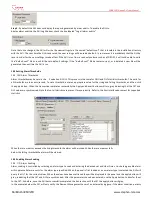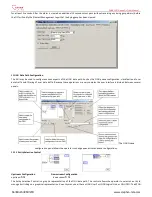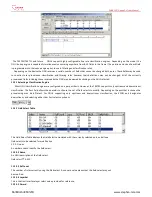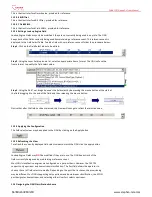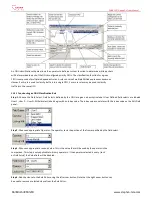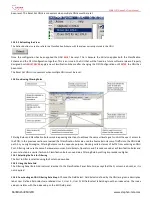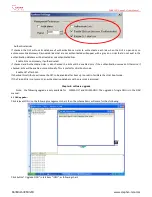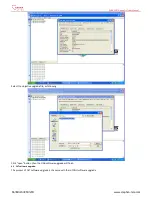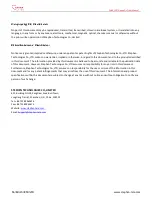
SNA8110T Gepon OLT User Manual
陈泽科技有限公司
www.stephen-tele.com
12.1.2 Behavior of OLT
By default the OLT shall block all IGMP multicast data traffic preserving the bandwidth of the PON and user network. When an
STB or other host attached to one of the several ONU’s UNI ports requests to join a multicast group, the query is snooped by the
OLT’s CPU, and conditionally forwarded upstream.
12.1.2.1 Report Received from Logical Link
If no host is joined to the group on the attached interface, the OLT will install a new rule to forward the group to one of the
several IGMP multicast data FIFOs. The OLT will pick the FIFO with least groups joined.
Group Insertion Process:
12.1.2.2 Leave Received from Logical Link
The OLT will issue LMQC GSQs, spaced by LMQI until one of the following two events occurs (whichever occurs first).
1. 1 or more reports are received upstream for the group specified in the leave message.
2. No report is received after LMQI units from the time that the final LMQ was issued.
In case (1), the load balancing algorithm will be applied as described above. In case (2) the group will be removed from the
forwarding table, and the OLT will transmit a leave message, with the provisioned source IPv4 Address, from the OLT’s NNI.
Group Removal Process:
12.1.2.3 General Query Issued
The OLT will periodically issue General Queries every Query Interval units. The use of the General Query in IGMPv2 is very
different from the way it was used in IGMPv1. In IGMPv2 the General Query is used for failure detection only. In IGMPv1 the
General Query was the only mechanism used to detect a leave. Because failures are extremely rare in modern networks the
Query Interval may be provisioned to a very large value. Query Response Timeout units after the OLT issues the General Query
the OLT will decrement the robustness variable for each group joined for which the OLT has not received a report. When the
robustness for a particular group is 0, the OLT will assume that an implicit leave has occurred and start the same process as
described above. Since IGMPv2 has a different mechanism than IGMPv1 to guarantee robustness - the Group Specific Query
Count - it is probably not necessary to provision the Robustness Count to a large value. The value recommend by the standard for
backwards compatibility with IGMPv1 is 2, however, if the target system will only have IGMPv2 capable clients, a robustness
count of 1, is probably a better choice.
The protocol description assumes that IGMP snooping and proxy are enabled. If these functions are disabled, IGMP multicast data
packets will be forwarded based on the Host provisioned classification scheme and bridging mode(s).
If faster leave operation is desired, the GSQC may be set to 1, and the Last Member Query Max Response Time provisioned to a
smaller value than the default.
The ONU Snooping and OLT Proxy functions MUST be configured identically. Otherwise multicast traffic will NOT be forwarded as
expected.
The number of IGMP multicast data FIFOs used MUST NOT be changed when the OLT PON Plant is enabled.
12.2 GUI Authentication Function
The authentication function in the GUI requires the creation of an external database of authentication secrets. The external
database is to be a plain ASCII text file named “Prov.db”. The first line in the database contains the number of authentication
records. Each record consists of an LLID MAC Address, end-line, authentication secret, and end-line.
Example File:
Three Boolean attributes found in the Utilities/System Settings panel control the authentication behavior:


